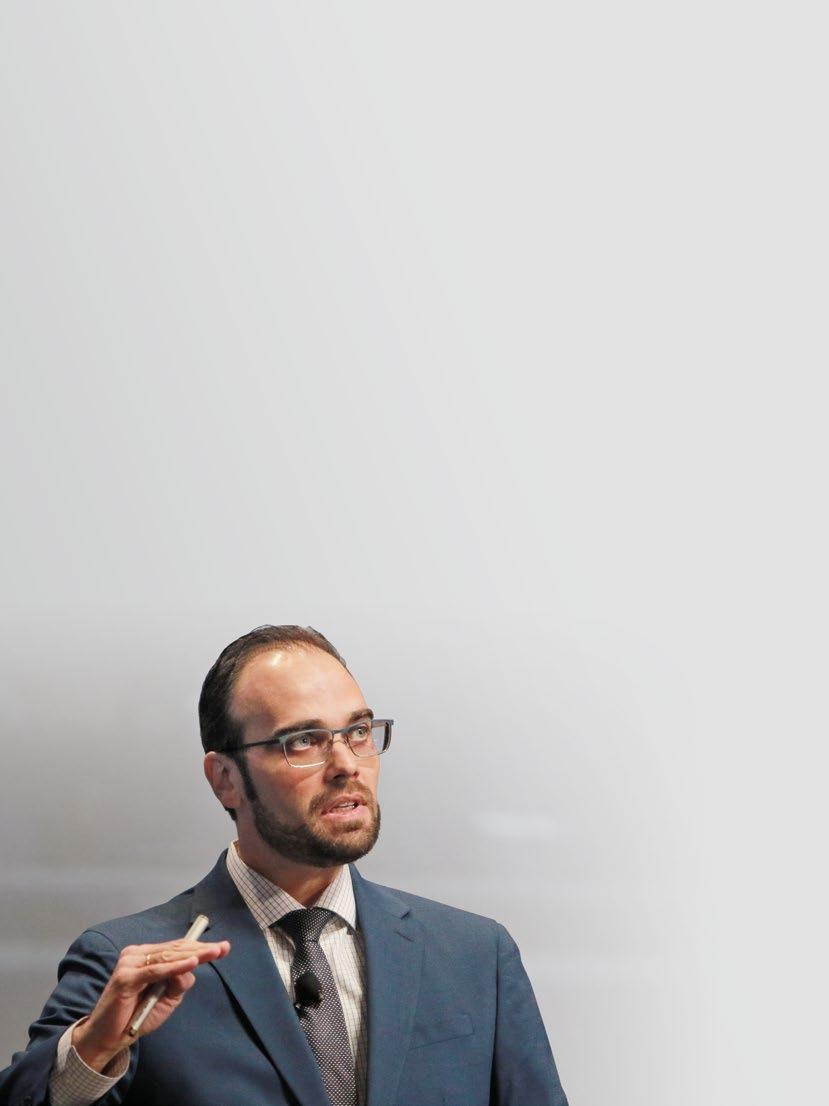Histology
Orthodontic tooth movement makes new bone formation Dr. Pal Nagy DMD | Hungary Department of Periodontology Semmelweis University
FIG. 1
Histologic images were obtained during an ongoing randomized controlled trial. After flap elevation, debridement of the root surface and removal of the granular tissues, non-containing intrabony defects were filled with Geistlich Bio-Oss® and covered with Geistlich Bio-Gide®.1 Patients in the test group underwent postoperative Orthodontic tooth movement (OTM). In the control group, teeth remained splinted without OTM. At 9-month re-entry, bony core samples were harvested and analyzed. Geistlich Bio-Oss® was integrated into the newly formed bone in both groups. In the test group, the ratio of de novo bone formation was higher, and postoperative OTM appeared to induce remodeling interfering with the graft and promote new bone formation, particularly at compression sites.
FIG. 2
Histology: Peter Schüpbach
“The observation of multinucleated giant cells and cutting cones confirms the safety and predictability of periodontal bony regeneration combined with OTM using Geistlich Bio-Oss®.” FIG. 1: An intimate contact of new bone to graft paticles was observed,
characterized by bone extensions growing into the graft surface. FIG. 2: Cross section of the repairing part of remodeling “cutting cone.”
Osteoblasts secreting the newly formed woven bone.
Reference 1
Nagy P, et al.: Int J Periodontics Restorative Dent.
2019 11;40(3):321–30. (clinical study)
OUTSIDE THE BOX
27





